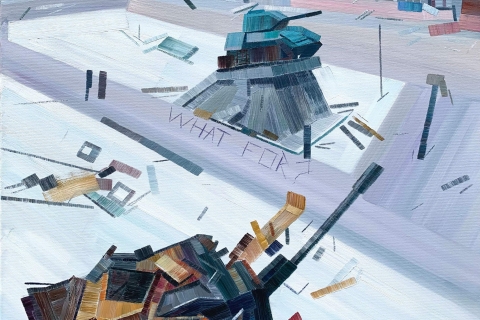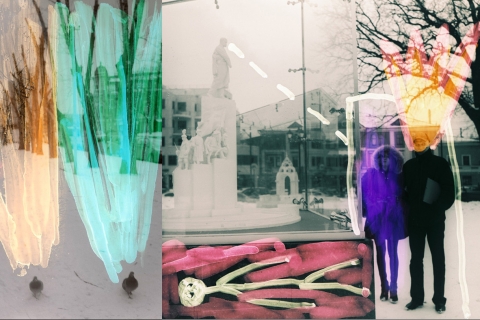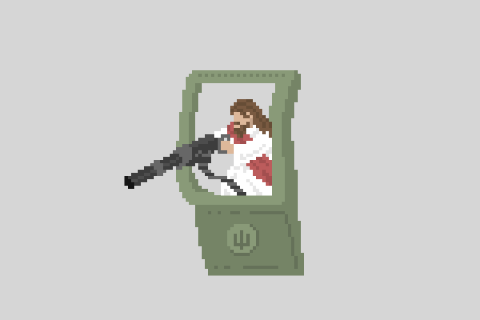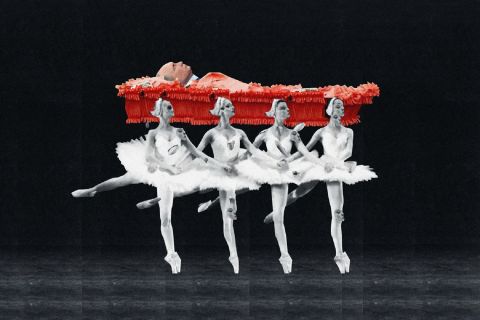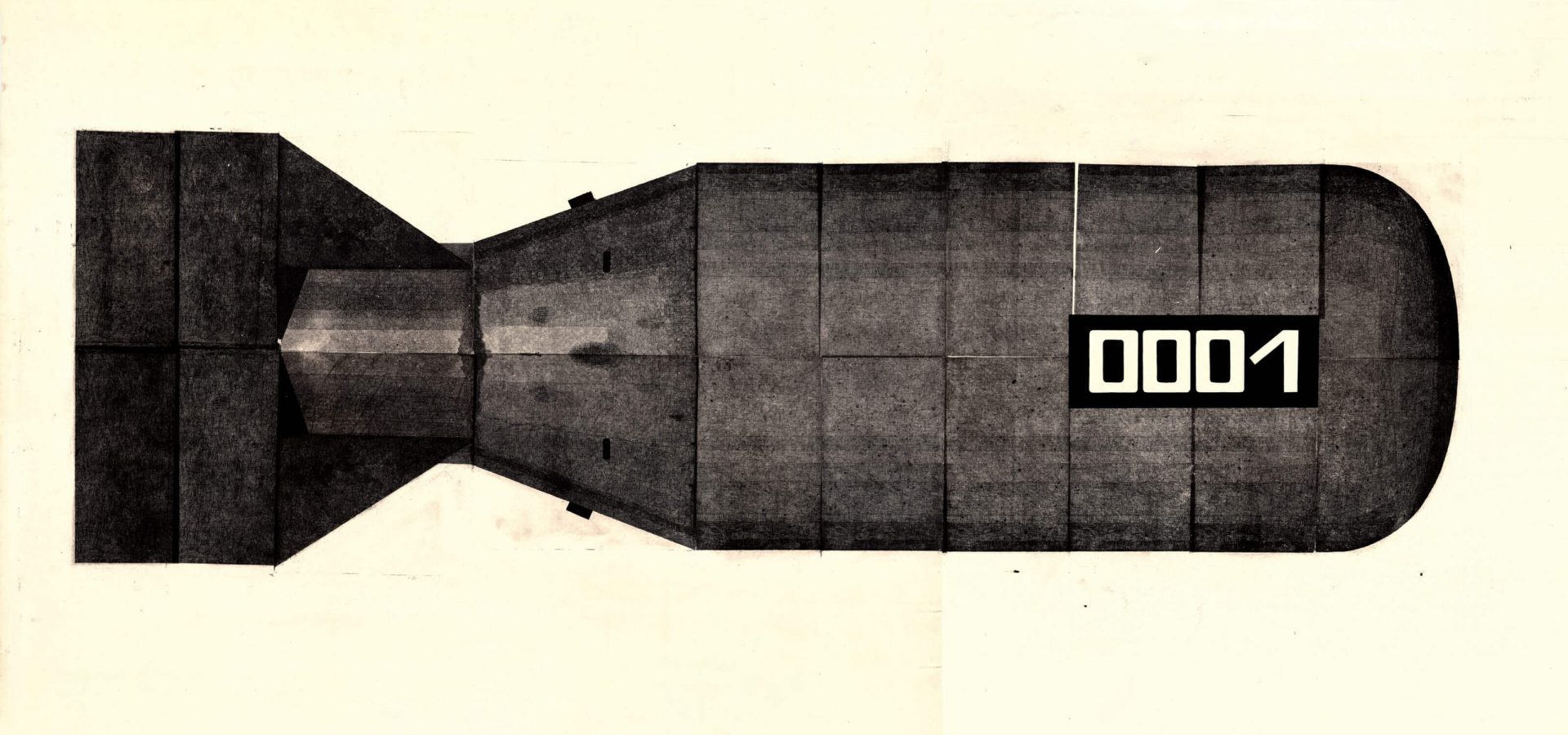
Look Up: Bombs and Alerts in Etching Room 1 Prints
Etching is a type of engraving. At first, the metal board is polished and degreased, then — covered in polish or wax, and after that a picture is scratched off with a needle. Afterwards, the board is dipped in nitric acid so that the latter gets inside the scratches. Eventually, the holes are filled with paint, and the image is transposed to the wet paper. In early days, the etchings were pretty tiny, but the modern ones, like those by Etching Room 1 can be of large scale. Besides, such technique requires a lot of time, so while the work is in the making, its meaning and perception may vary.
Despite the fact that Ukrainian artists, particularly Taras Shevchenko, used etching technique, the tradition of deep engraving is not very common among the contemporary artists. In addition to etching, Anna and Khristina work in other traditional techniques: linocut and silk-screen printing. In order to combine it with modernity, the artists depict the world around them and transform it into prints, posters, and tattoos.
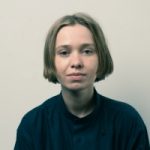
Artist. Graduated The National Academy of Visual Arts and Architecture, Kyiv, free graphics department. She uses etching, linocut, silk-screen printing, monotype, calligraphy techniques in her work. In 2016, Anna founded the Etching Room 1 project together with Kristina Yarosh.
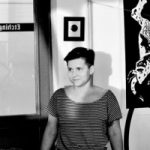
Artist. Studied at the graphics department of the National Technical University of Ukraine “Igor Sikorsky Kyiv Polytechnic Institute”. She works in module etching technique. In 2016, she founded the Etching Room 1 project together with Anna Khodkova.
— Etching technique is a laborious, but not an essentially hard process. The creation of one art piece could take up to a month, but we like this duration, as the work itself and its perception may vary in the making. The end result can turn out to be quite contrary to what is expected. We see the result much later than other artists. At first, we create a form, and only then we print it and check what we’ve come up with. And when it turns out great, it is particularly pleasing.
Influenced by the modern impact, the etching technique changes. When it has just emerged, the artists created tiny linear prints. As for us, we make quite large works, and it is not typical for etchings. At first, we think of an idea together, and then each of us draws her part — streets and spaces, or characters and their emotions. But we don’t walk around the city searching for ideas — rather depict whatever concerns us both. Same goes for inscriptions on our works. They mostly appear right from the daily life — we hear these phrases or use them in conversations.
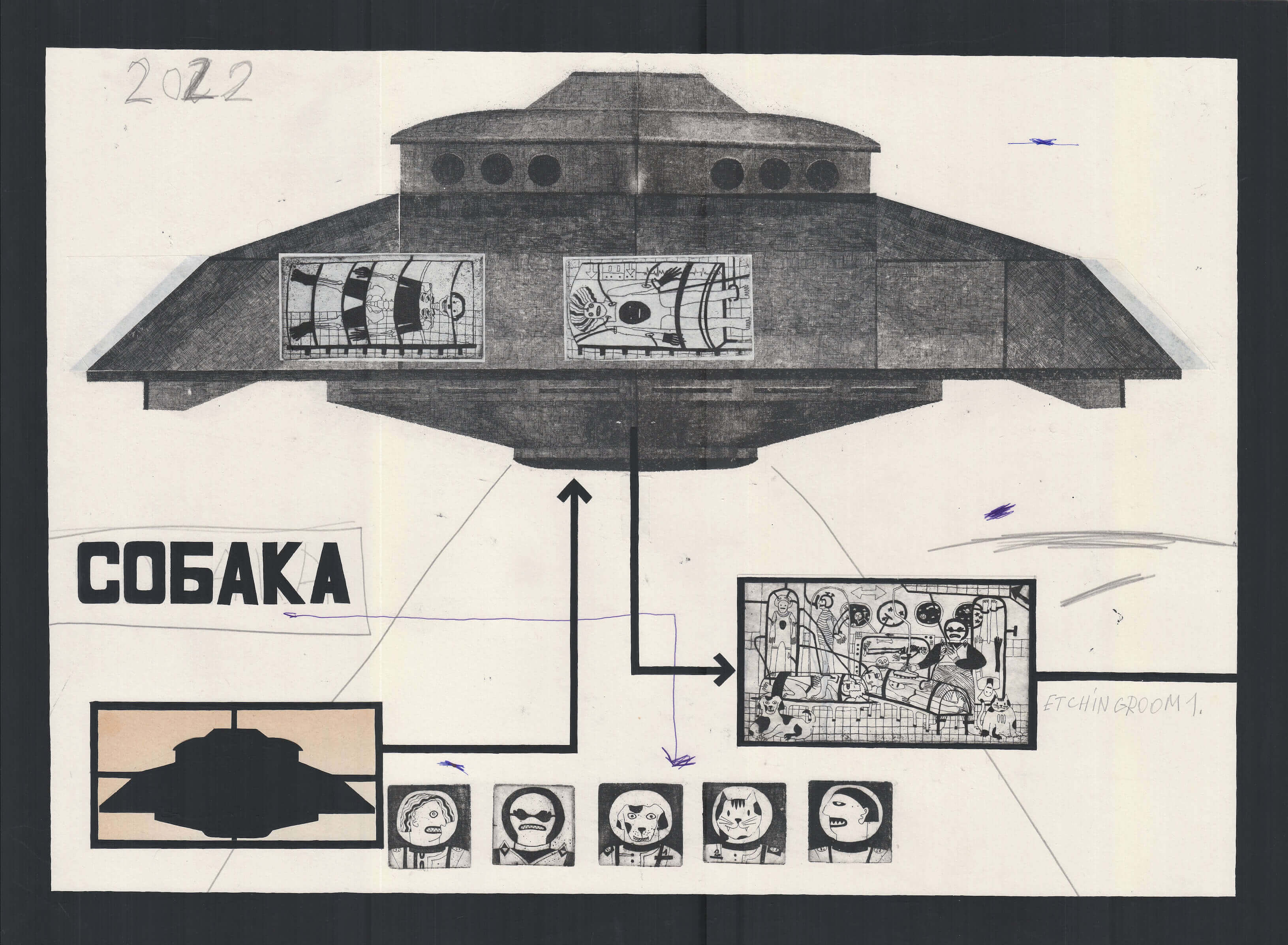
Dog
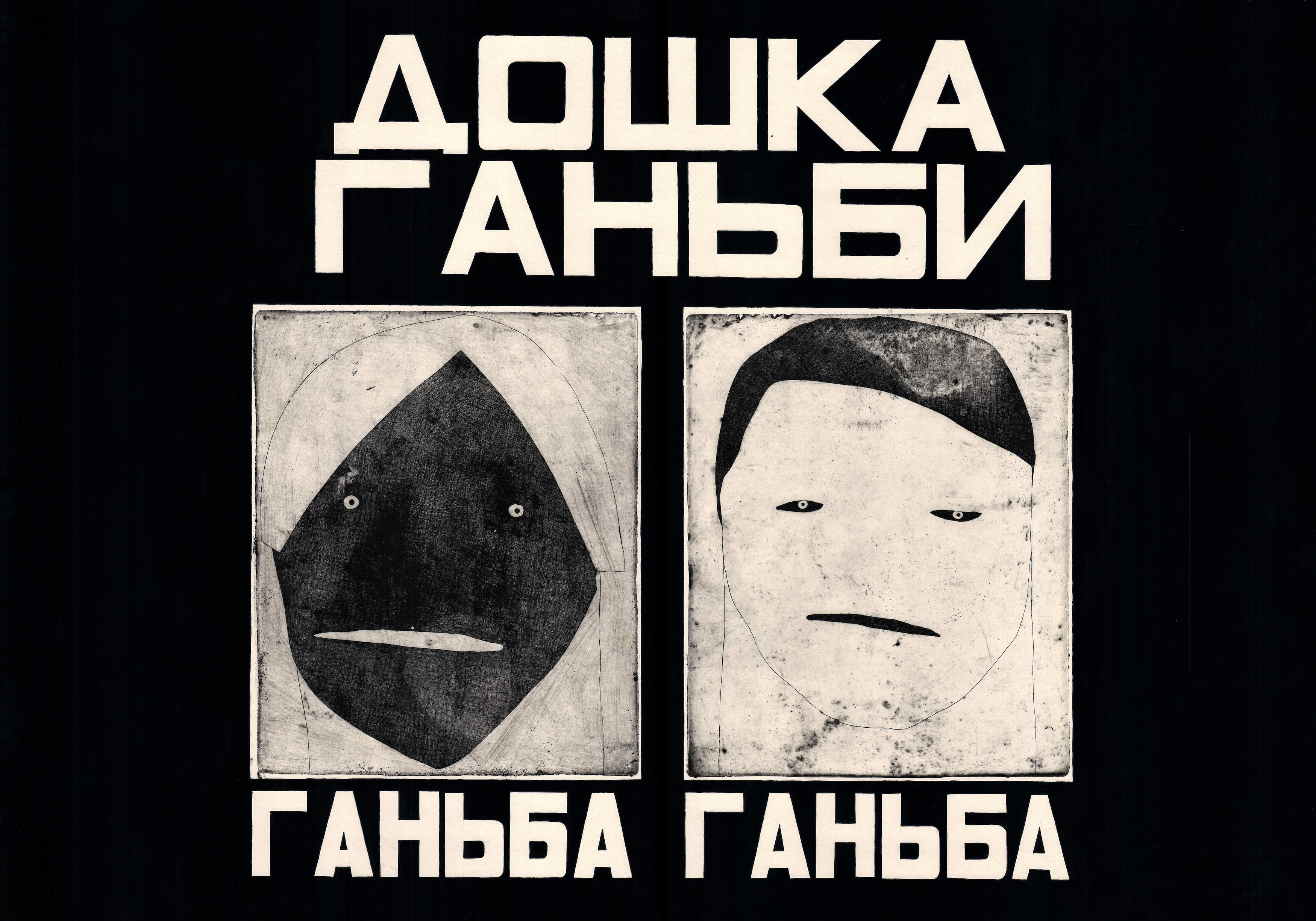
Wall of Shame
Shame. Shame.
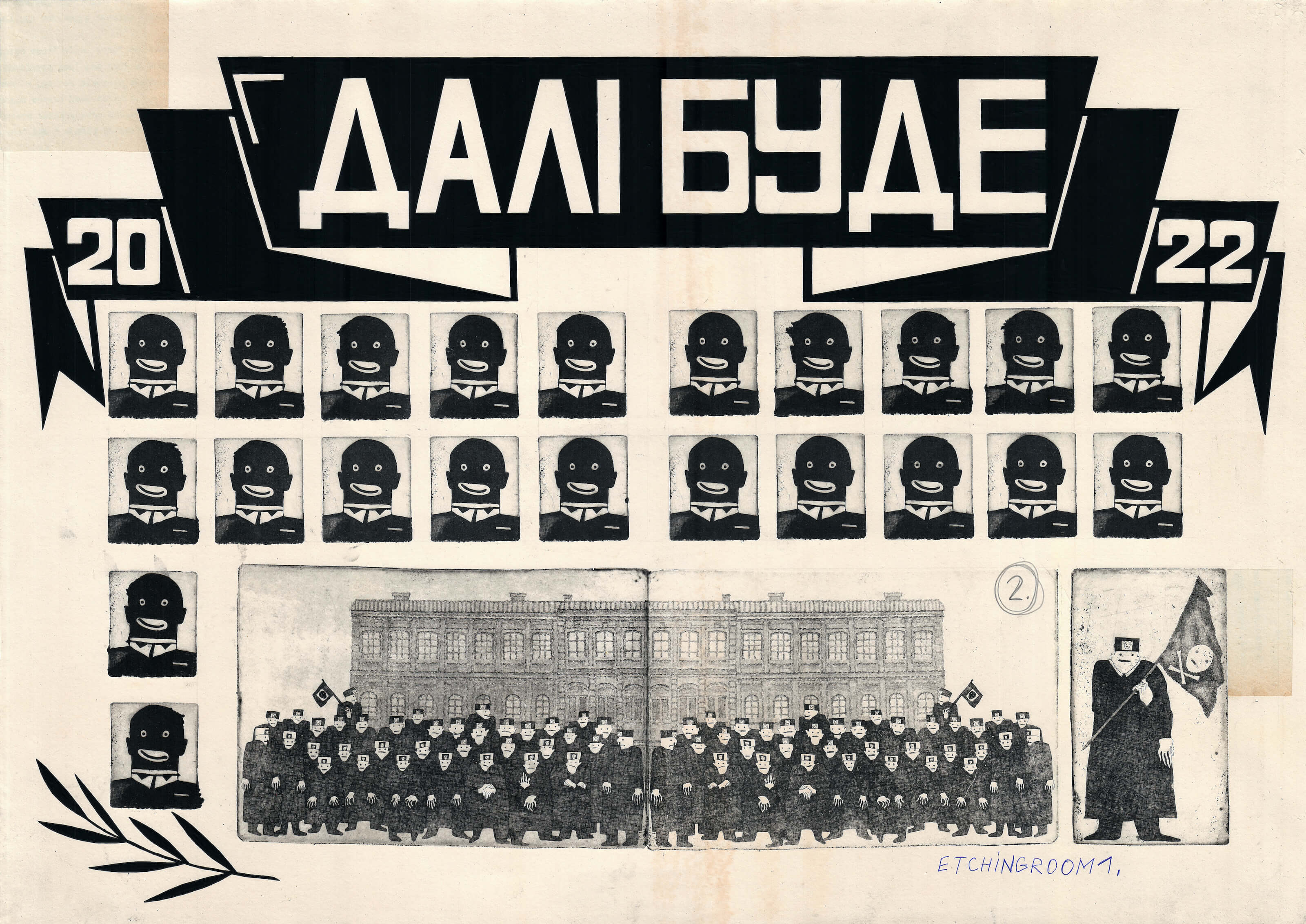
To be continued
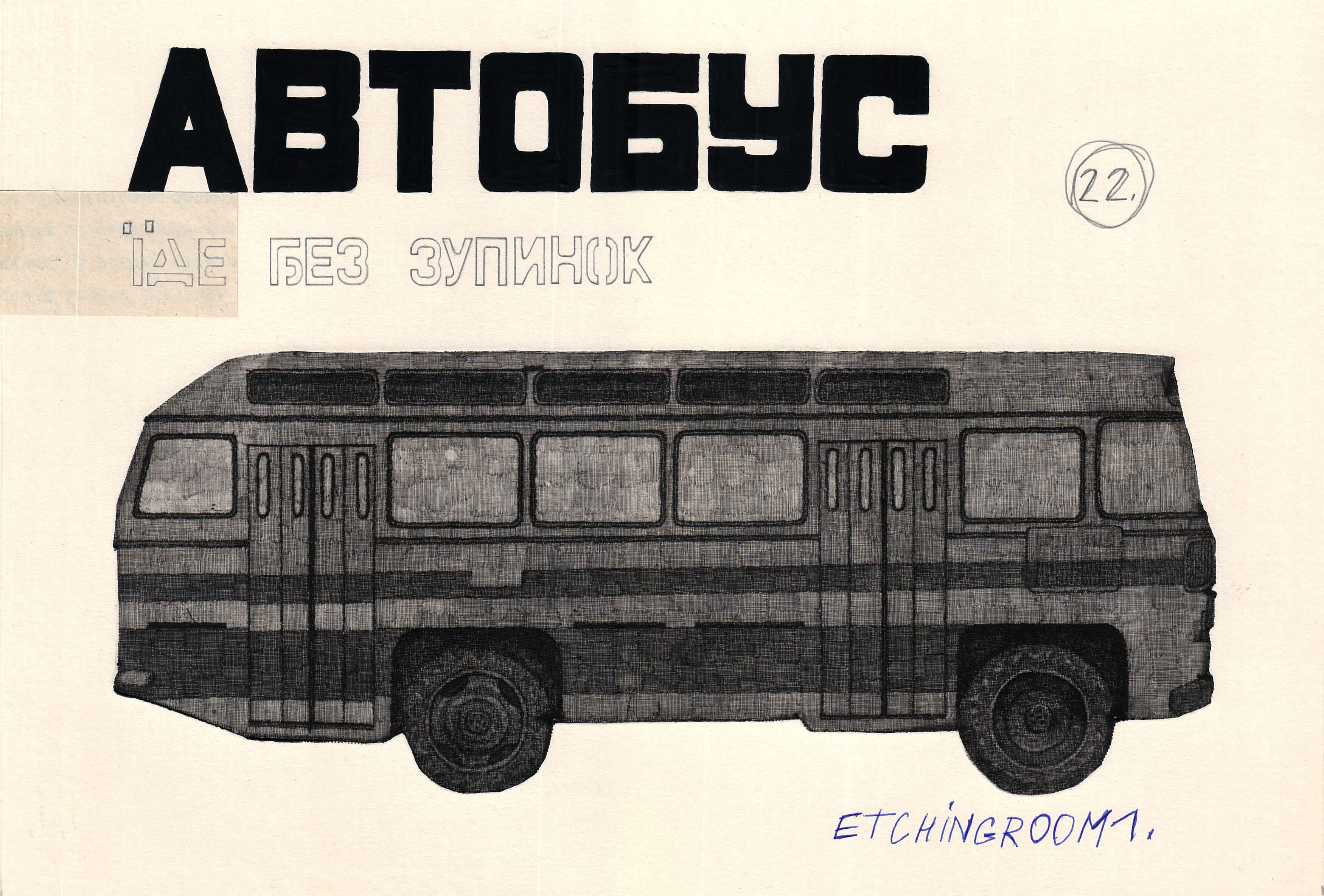
A bus goes without stopping
A modern Ukrainian city is anxious and at times depressive. The works turn out the same. We put there a feeling of insecurity which seems to be present in everyone’s life. Well, we try to approach even not particularly cheerful topics in a way that they become easier to take in. So that people would be able to look at them feeling something else besides “we’re doomed”.
A modern Ukrainian city is anxious and at times depressive. The works turn out the same.
For instance, we used felt-tip pen drawings in one of our previous series. We made them similar to what the kids draw. It seems to us that children are perceiving the world somewhat differently. When something is going on around, they treat it as a fact, as a given. They aren’t as emotive as adults, not prone to analyzing what has happened. We also wanted to switch the emotions off in these pictures, simply turn them into stories — the fantastic but unfulfilled ones.
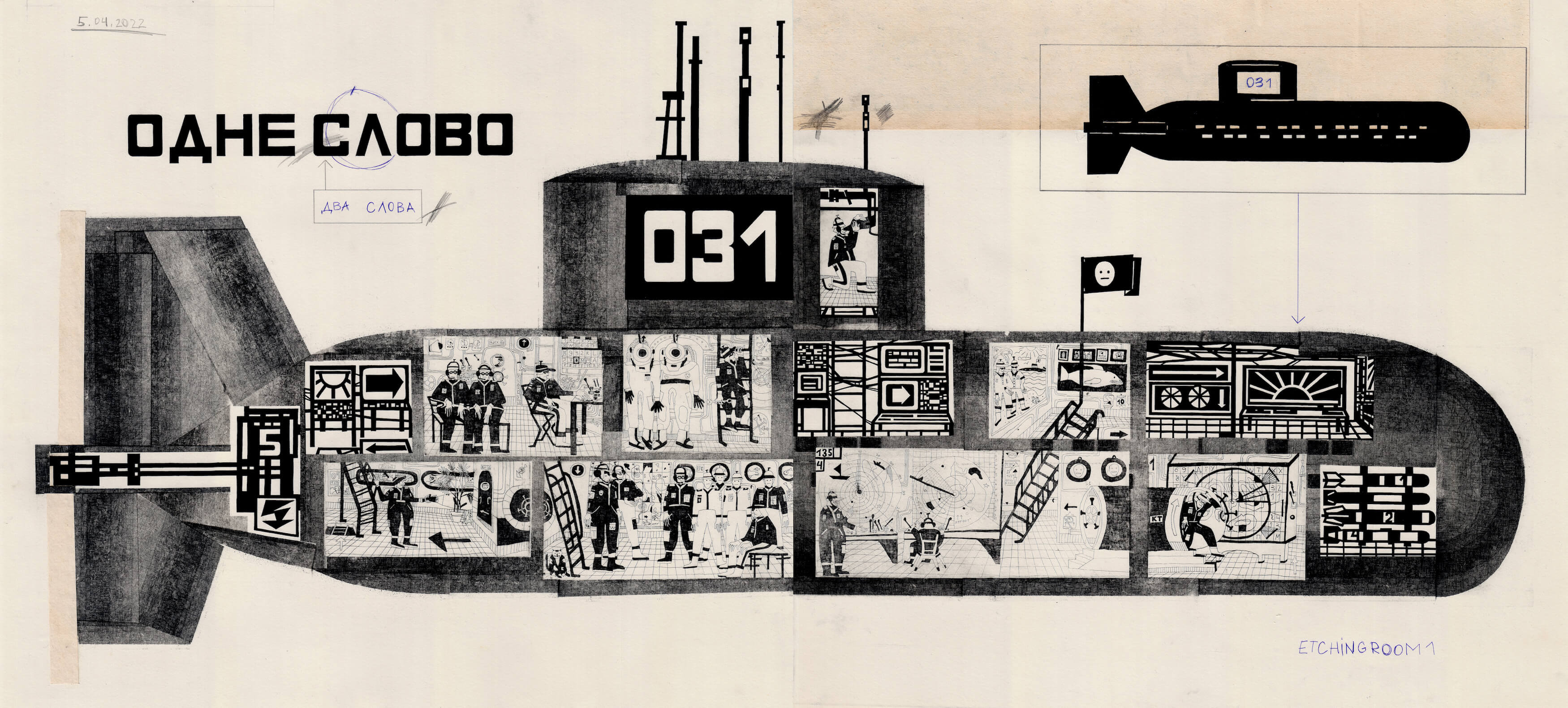
One word.
Two words
Till the last moment, we didn’t believe the full-scale invasion would take place. But, perhaps, somehow we subconsciously felt these changes. Thus, bombs and submarines popped up in our works. Guess it’s impossible not to think about it, when you live in a country where the military action has long been waged. This topic always concerns. And if we speak about the nuclear bomb, then this topic might be of everyone’s concern ever since it was first launched.
Till the last moment, we didn’t believe the full-scale invasion would take place. But we subconsciously felt it. Thus, bombs popped up in our works.
We showed these very works at the Berlin exhibition that opened on May 10. One of them depicts a bomb. We made it about 6 months ago, so there were doubts as to whether we should print it. On the one hand, we felt a need to make it, on the other hand, we faced an internal block. As while this bomb existed only in our imagination, it was abstract. And when it is depicted on paper, it somehow becomes real. With the beginning of a full-scale war, this work’s meaning shifted. Now these bombs are definitely real, they made a lot of people leave the country.
One of the pictures has sign “It was crowded yesterday”. We decided that it would suit as a name for this exhibition. Because it was crowded yesterday, with people gathering up at the train stations to evacuate. It was crowded yesterday in the subway, with people hiding from the shelling or listening to a concert. And today there aren’t as many people here.
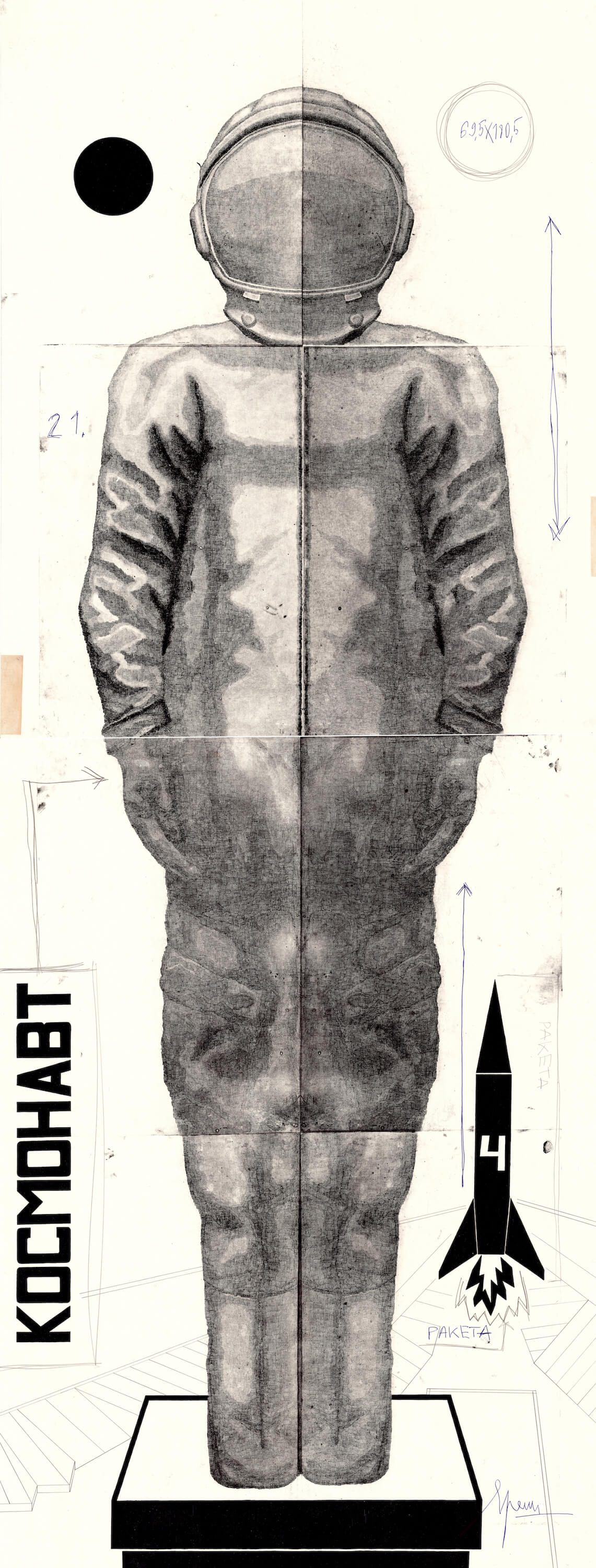
Cosmonaut
Rocket
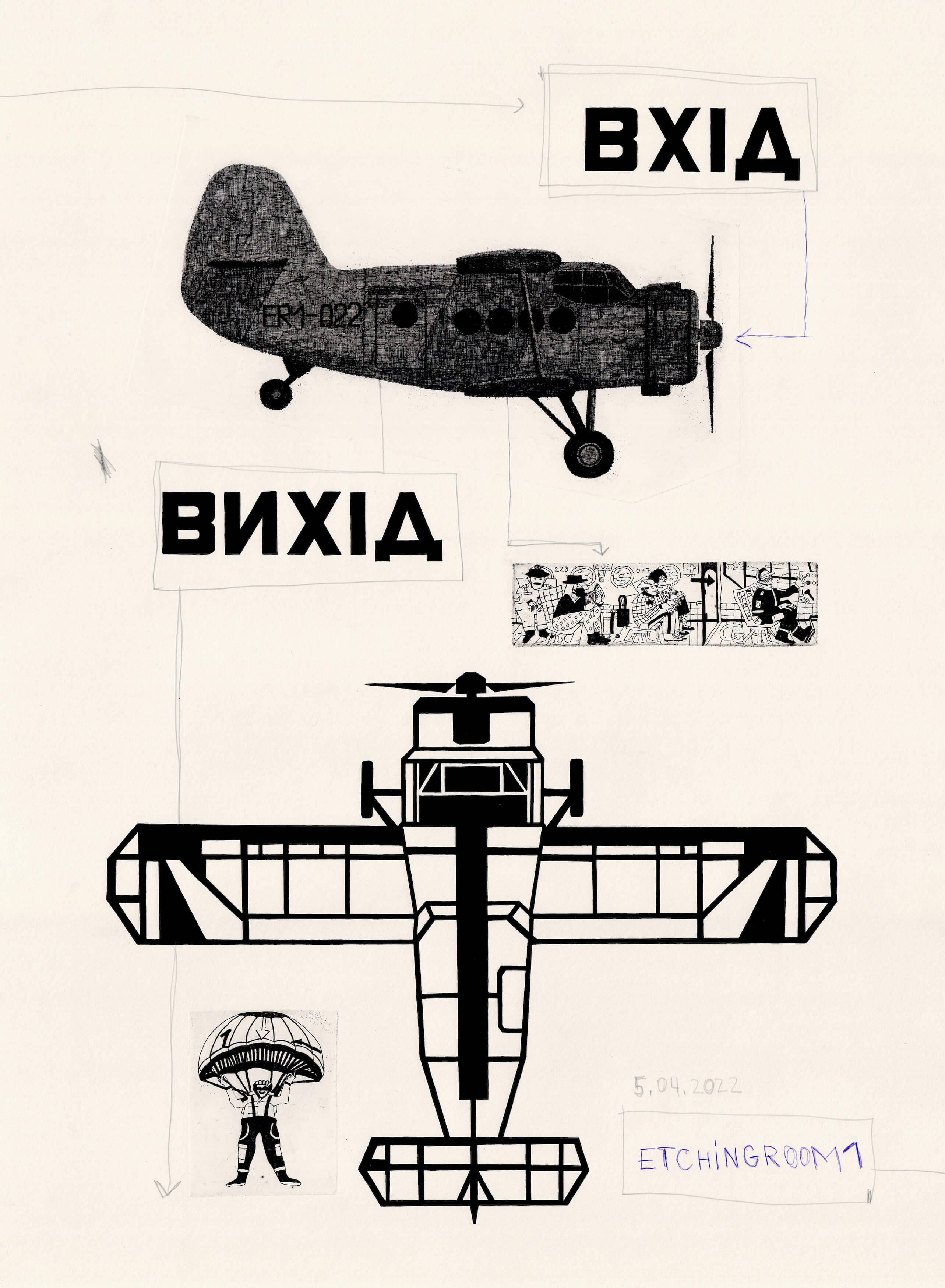
Entrance
Exit
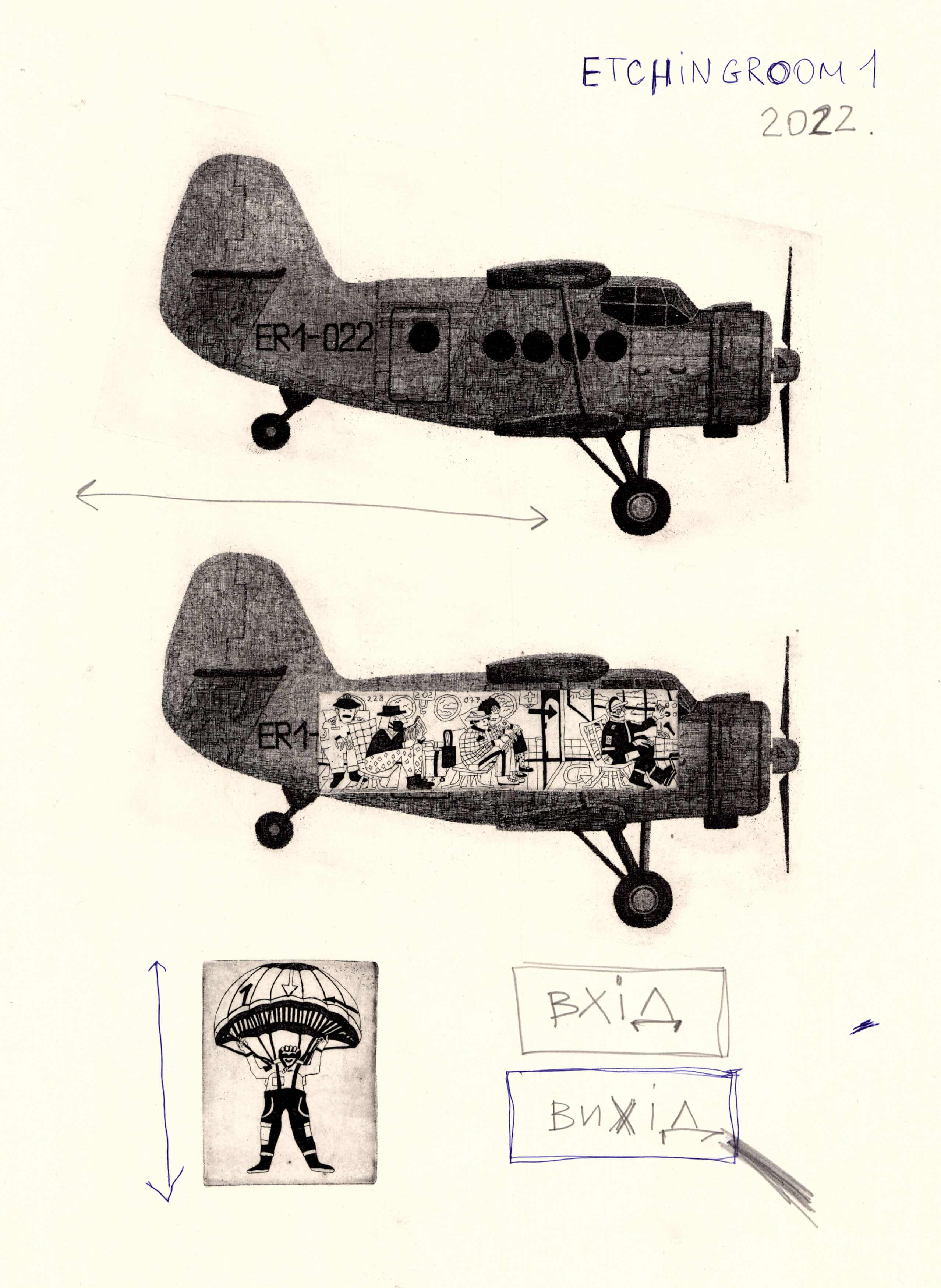
Entrance
Exit
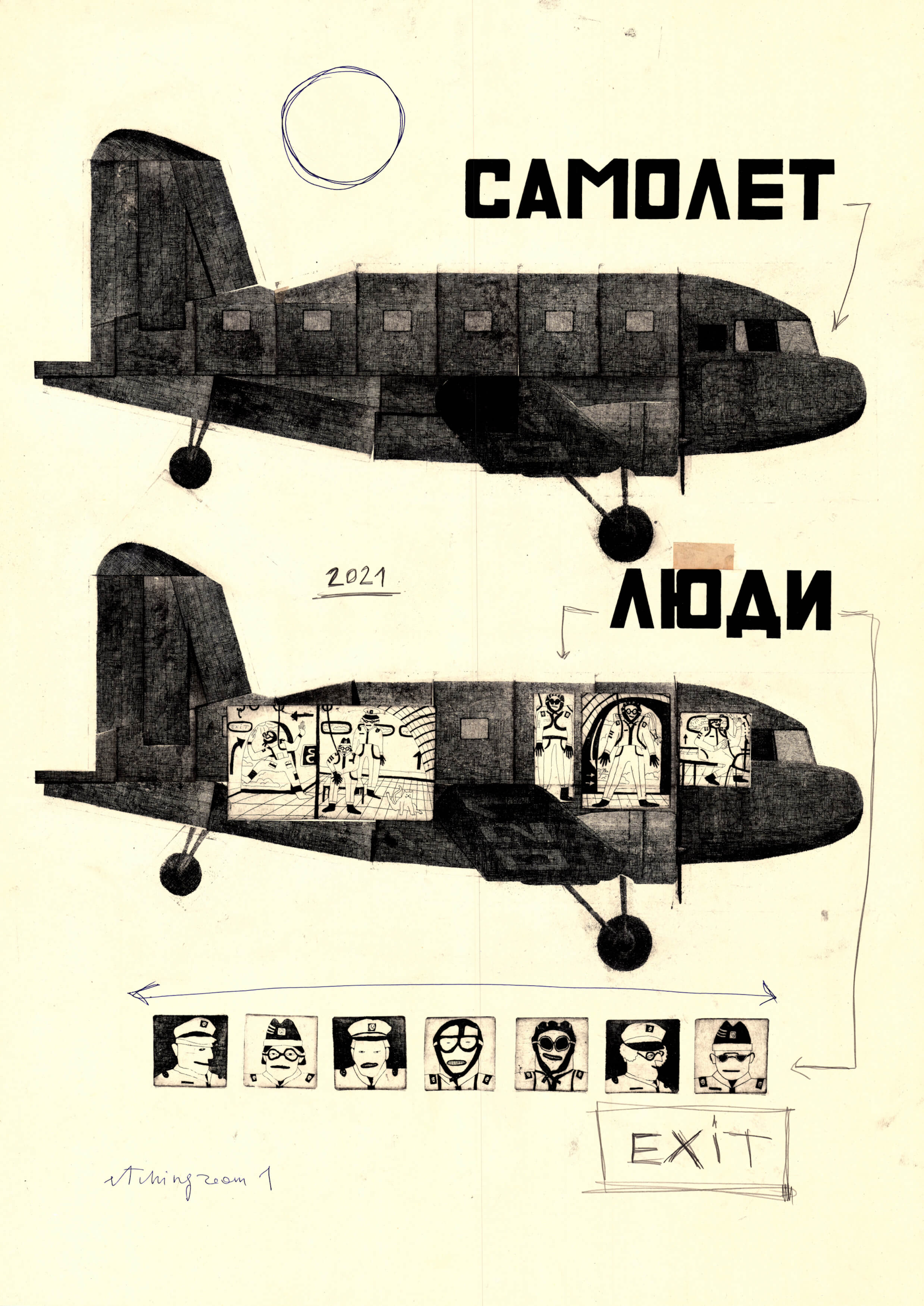
Plane
People
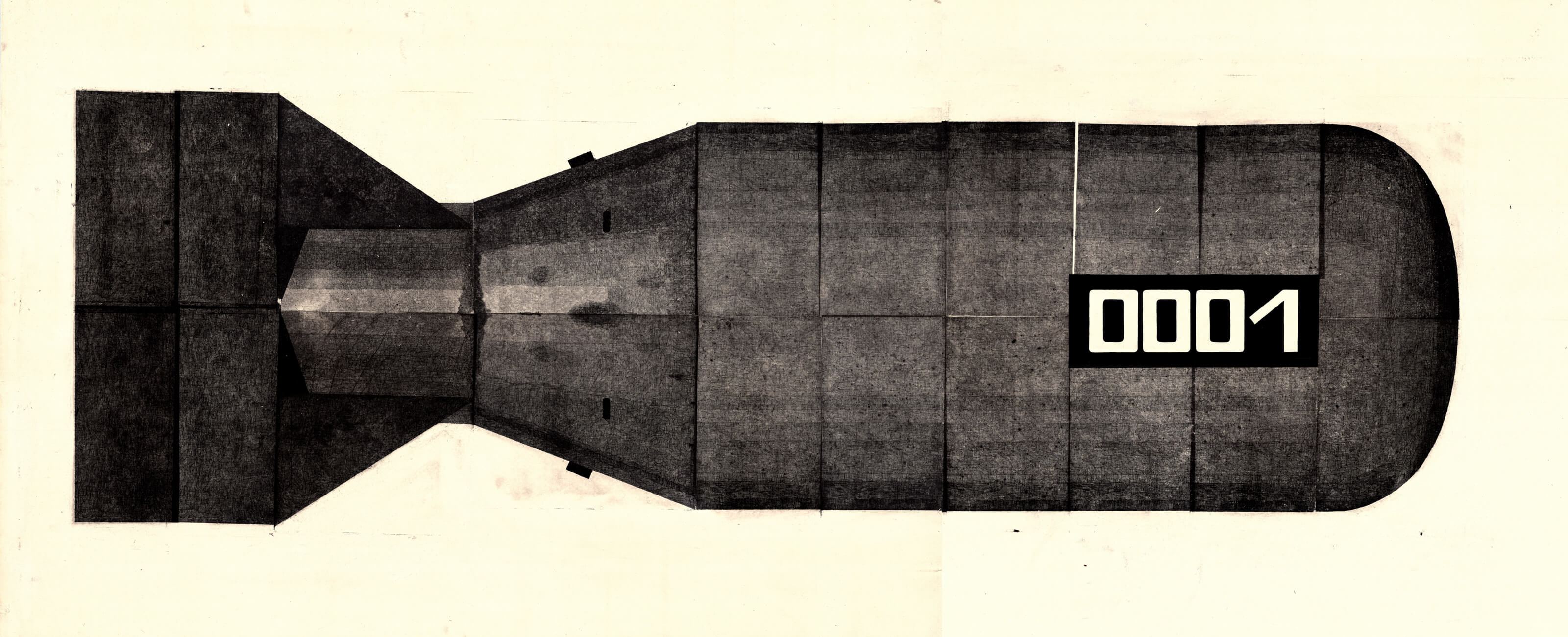
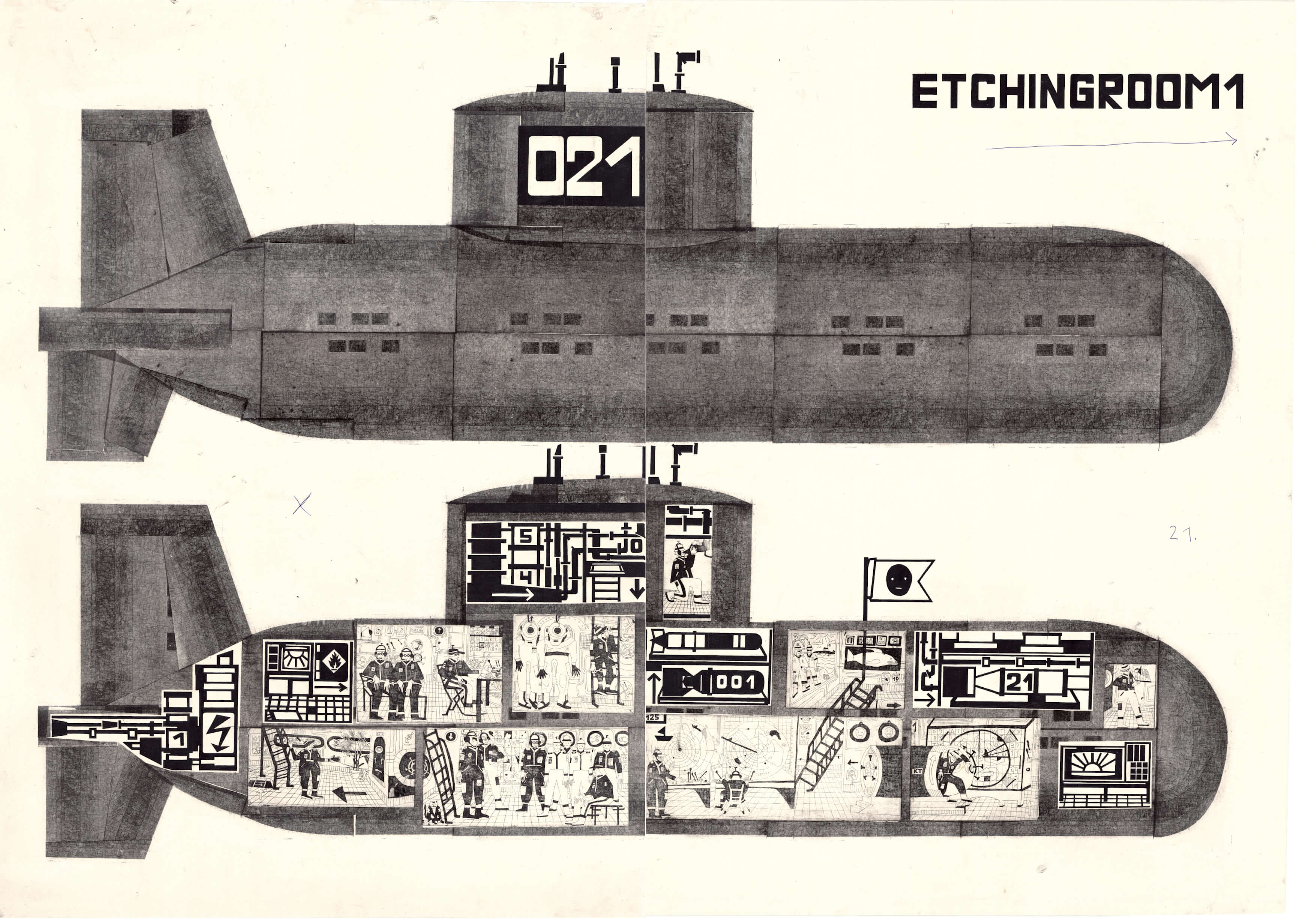
It is good that now the artists reflect the topic of war. As there is a good deal of people who follow their art, so they can feel some unity and the fact they don’t live through this hard experience by themselves. Art shows now that the whole country has similar emotions.
Art shows now that the whole country has similar emotions.
We started working about a week after the beginning of full-scale invasion. It was hard, as we were in different cities — Lviv and Kyiv, — so we had to work from afar. First thing, we got back to our previous sketches. It was very helpful, because we didn’t have to face a blank sheet of paper trying to make up what we want to draw. With some guidelines, we could dive right into working and even started planning our future.
Now we are set to finish working on a liner — it’s the picture on emigration. We made almost all forms before the war, but we didn’t manage to print them. Also, we want to create a comic book depicting a day in life of a made-up city, which is approached by the submarine with a nuclear bomb on board. This idea came when the invasion hadn’t yet started, but the mood was pressing. Now the mood stays the same, so the setting is still timely.
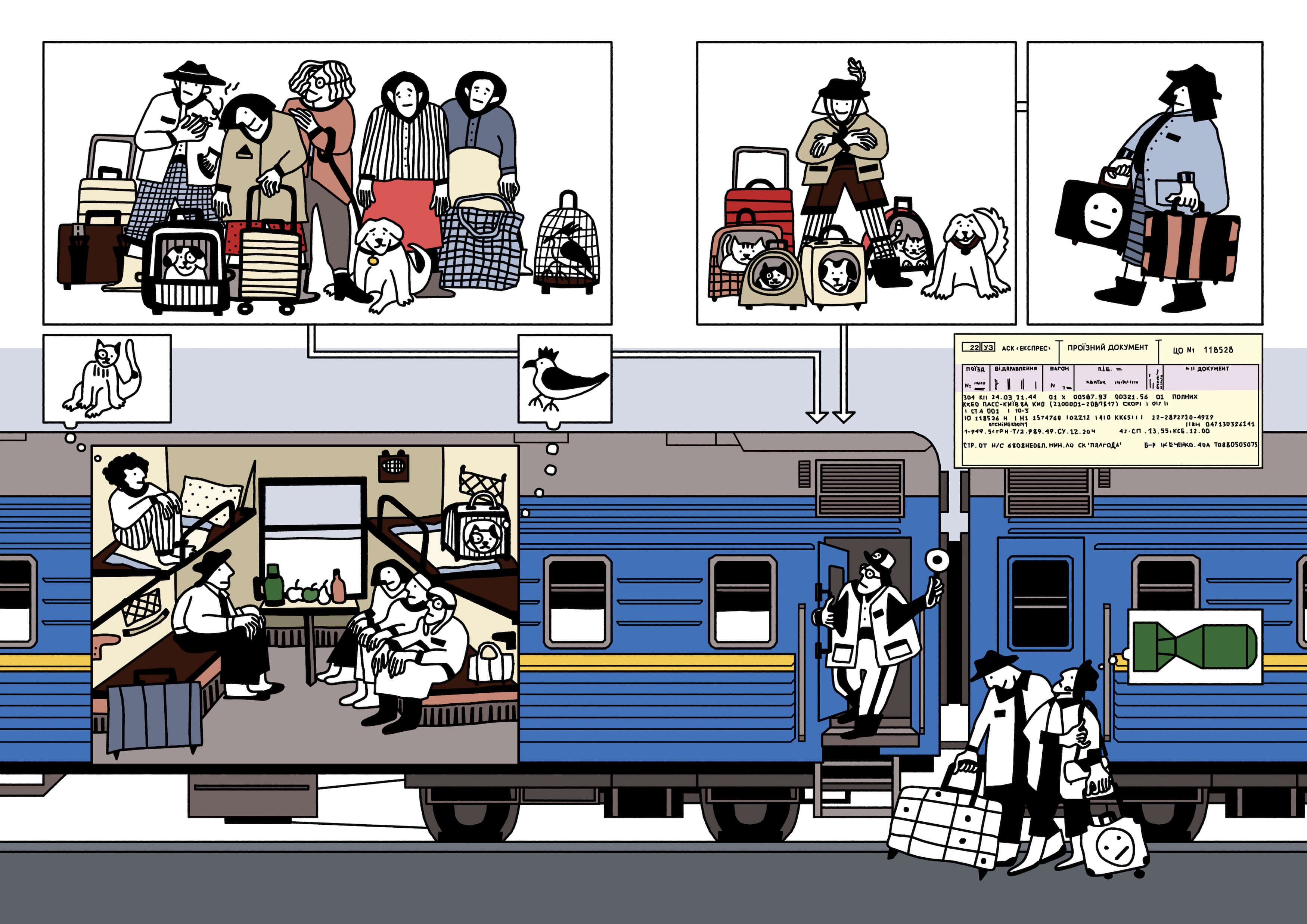
Train station
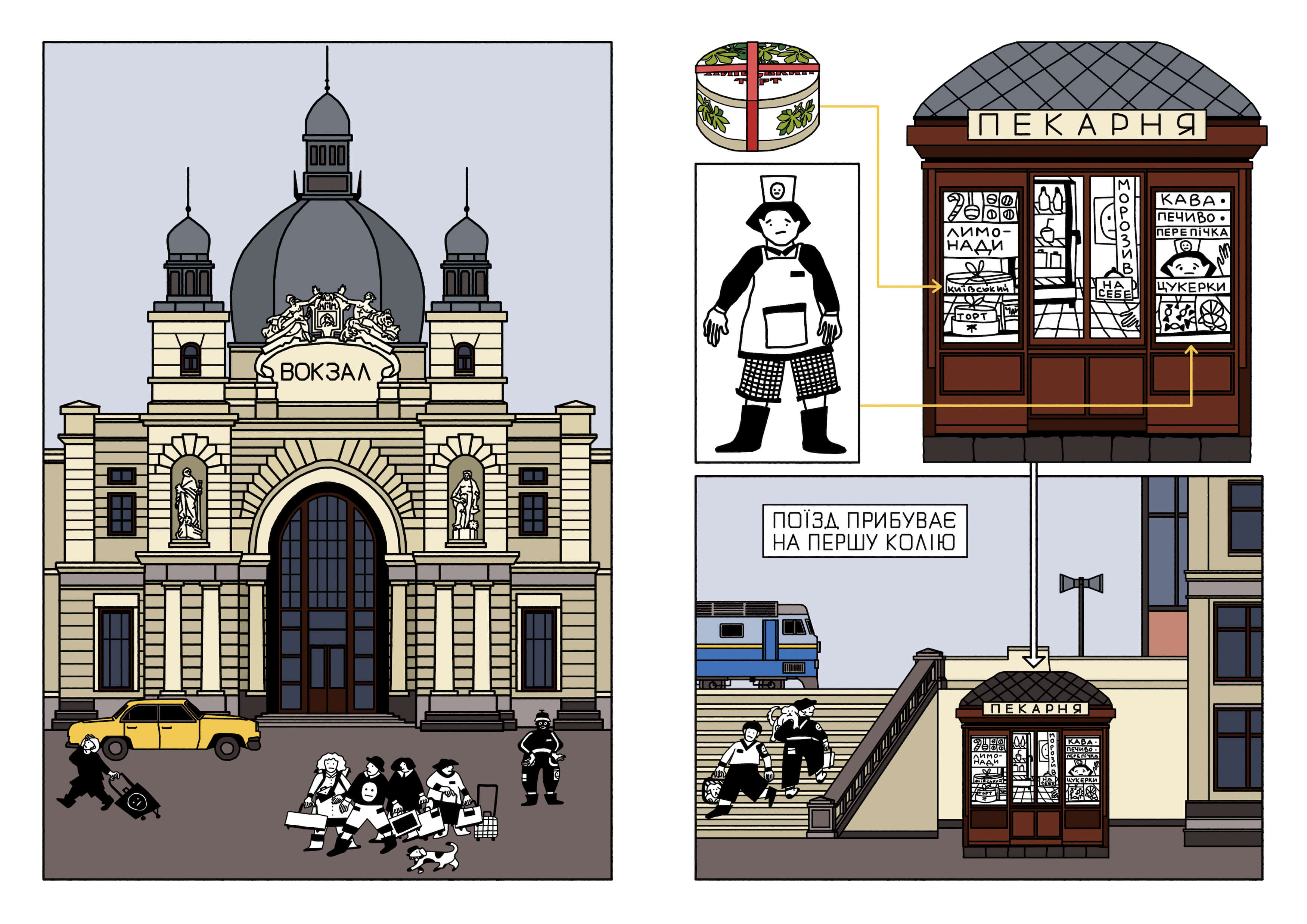
Bakery (lemonades, Kyiv cake, ice cream, coffee, beer, perepichka, sweets)
A train arrives to platform 1
Etching Room 1 works are available:
At «It was crowded yesterday» exhibit in Berlin
East Art Gallery (Gosslerstrasse 1)
May 10 — June 30
Mon-Fri 2 p.m. to 6 p.m.
At exhibition in Paris
Centre Culturel d’Ukraine en France (22 avenue de Messine)
Starting May 31
